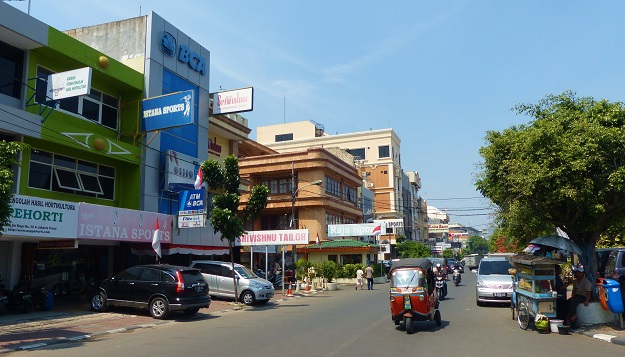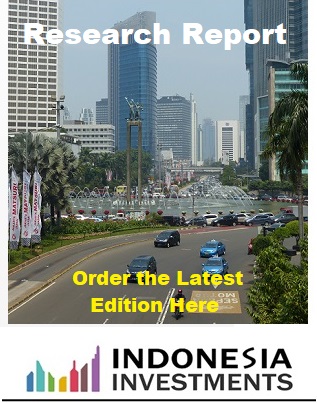Economy of Indonesia: GDP Growth at 5.27% in Q2-2018 Tops Estimates
Although overshadowed by the news of the devastating earthquake in Lombok, Statistics Indonesia (BPS) released the official Q2-2018 gross domestic product (GDP) growth figure of Indonesia earlier today. The economy of Indonesia expanded 5.27 percent year-on-year (y/y) in the second quarter of 2018. This growth pace exceeds our expectations although it is not enough to necessitate a revision to our full-year 2018 GDP growth forecast of 5.2 percent (y/y).
The 5.27 percent (y/y) growth pace of the Indonesian economy in Q2-2018 is a welcome surprise. It is the highest (annual) quarterly growth pace that has been recorded under the Joko Widodo administration so far. However, there are doubts about the sustainability of this growth figure, especially now Bank Indonesia has recently raised the country's interest rates rather aggressively in an effort to defend the rupiah amid heavy external pressures.
Robustly accelerating economic growth in Q2-2018 strengthened investors' confidence in Indonesia. The benchmark Jakarta Composite Index immediately surged around 1.50 percent after the release of Indonesia's GDP data. Over the past couple of months plenty of negative reports surfaced related to the Indonesian economy, ranging from the fragile rupiah (which depreciated nearly 6 percent against the US dollar so far in 2018) to the widening current account deficit. Therefore, the latest upbeat GDP growth pace is a welcome surprise. The rupiah, however, did not appreciate too markedly and is now around IDR 14,480 per US dollar.
The table below shows that the Q2-2018 GDP growth figure is the highest quarterly figure since the fourth quarter of 2013.
Indonesia's Quarterly GDP Growth 2009-2018 (annual % change):
| Year | Quarter I |
Quarter II | Quarter III | Quarter IV | Full-Year |
| 2018 | 5.06 | 5.27 | |||
| 2017 | 5.01 | 5.01 | 5.06 | 5.19 | 5.1 |
| 2016 | 4.92 | 5.19 | 5.01 | 4.94 | 5.0 |
| 2015 | 4.71 | 4.66 | 4.74 | 5.04 | 4.9 |
| 2014 | 5.14 | 5.03 | 4.92 | 5.01 | 5.1 |
| 2013 | 6.03 | 5.81 | 5.62 | 5.72 | 5.6 |
| 2012 | 6.29 | 6.36 | 6.17 | 6.11 | 6.0 |
| 2011 | 6.45 | 6.52 | 6.49 | 6.50 | 6.4 |
| 2010 | 5.99 | 6.29 | 5.81 | 6.81 | 6.2 |
| 2009 | 4.60 | 4.37 | 4.31 | 4.58 | 4.6 |
Source: Statistics Indonesia (BPS)
In a press conference BPS Head Suhariyanto said that in terms of output, the nation's Q2-2018 economic growth was driven by all business sectors. Highest growth, however, was achieved by the "other services" component which grew 9.22 percent (y/y), followed by "company services" (+8.89 percent y/y) and "transportation and warehousing" (+8.59 percent y/y).
Meanwhile, non-household private consumption rose 8.71 percent (y/y) on the back of the local elections in late-June 2018, while household consumption finally accelerated to 5.14 percent (y/y), passing beyond the much-desired 5 percent mark. Rising household consumption is most likely the result of the Ramadan and Idul Fitri period (in May/June), a period when consumers traditionally boost spending on various goods such as food, clothes, bags, shoes, and transportation.

Last year, we did not detect such growth in household consumption amid these Islamic celebrations. In fact, during last year's Ramadan and Idul Fitri period there was a very disappointing increase in consumption (which puzzled quite some analysts). Hence, it seems like Indonesia's purchasing power has improved when looking at the Q2-2018 data.
Considering household consumption accounts for about 56 percent of total GDP growth, a significant rise in household consumption automatically boosts overall economic growth in Southeast Asia's largest economy.
While investment realization was not too great in Q2-2018, government spending rose sharply compared to the same quarter one year earlier, partly on the back of rising transfers from the center to the regions (the "village funds"). Local governments are tasked to boost local economies through these funds, hence create local employment opportunities.
Comparison Annual GDP Growth Rate Indonesia per Component:
| Component | Q1 2017 (y/y) |
Q2 2017 (y/y) |
Q1 2018 (y/y) |
Q2 2018 (y/y) |
| Household Consumption |
4.94% | 4.95% | 4.95% | 5.14% |
| LNPRT Consumption Expenditure¹ | 8.07% | 8.52% | 8.09% | 8.71% |
| Government Expenditure | 2.69% | -1.92% | 2.73% | 5.26% |
| Gross Domestic Fixed Capital Formation | 4.77% | 5.34% | 7.95% | 5.87% |
| Export | 8.41% | 2.80% | 6.17% | 7.70% |
| - minus import | 4.81% | 0.20% | 12.75% | 15.17% |
| Total | 5.01% | 5.01% | 5.06% | 5.27% |
¹ non-household private consumption
Source: Badan Pusat Statistik (BPS)
What Factors Can Undermine Indonesia's Economic Growth in 2018?
- Monetary tightening in the USA (possibly two more interest rate hikes in 2018) trigger capital outflows from emerging markets, including Indonesia.
- Rising pressures on the rupiah (stemming from US monetary tightening, simmering global trade tensions, and Chinese yuan depreciation) could make Bank Indonesia decide to raise its benchmark interest rate further this year, hence curtailing credit growth.
- Tax revenue realization is likely to miss the target (as usual). This could make the government decide to cut spending.
- Indonesian inflation may rise due to rising crude oil, rising fuel prices and imported inflation through the weak rupiah rate.
Projections Indonesia's GDP Growth in 2018:
| Institution | 2018 |
| Bank Indonesia |
5.1-5.5% |
| Government of Indonesia | 5.4% |
| World Bank | 5.3% |
| International Monetary Fund (IMF) | 5.3% |
| Asian Development Bank (ADB) | 5.3% |
| Indonesia Investments | 5.2% |
Various sources
-
Poll Indonesia Investments:
Who would you vote for in Indonesia's 2019 presidential election?
Voting possible: -
Results
- Joko Widodo (57.6%)
- Prabowo Subianto (31.9%)
- No opinion (5.7%)
- Someone else (4.8%)
Total amount of votes: 16331


